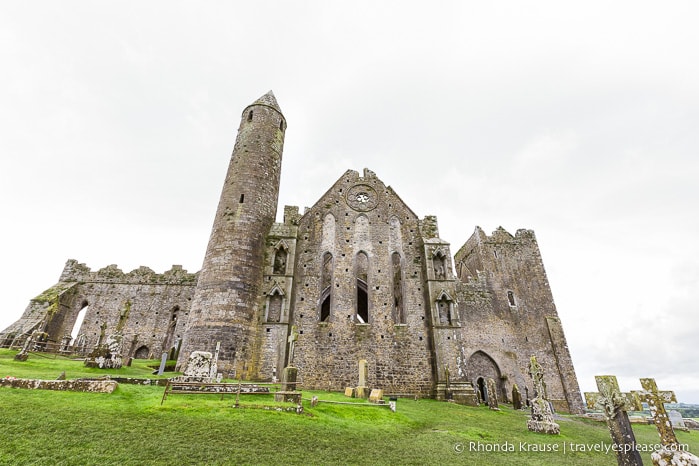The Rock of Cashel- One of Ireland’s Most Magnificent Ancient Sites
Purchases made through links earn us a small commission, at no extra cost to you.
I included a lot of ancient sites in my two week Ireland itinerary, but one that made a lasting impression was the Rock of Cashel.
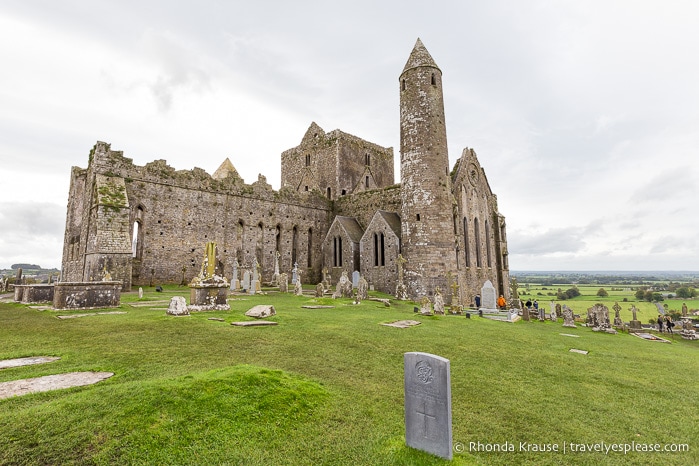
Prominently perched atop a green, rocky hill rising from a grassy plain, is a collection of medieval fortifications and religious buildings, their stone walls still strong and imposing though centuries old.
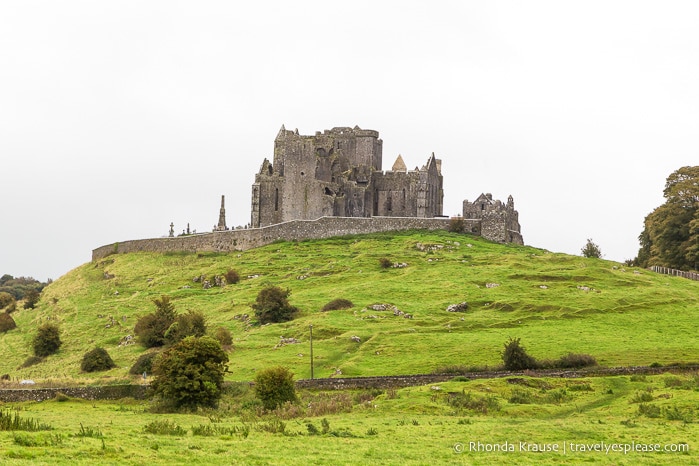
It was a sight that filled me with wonder when it came into view- just the type of scene I expected to see on my first trip to Ireland. I couldn’t wait to learn about and explore the Rock of Cashel, one of Ireland’s most magnificent archaeological sites.
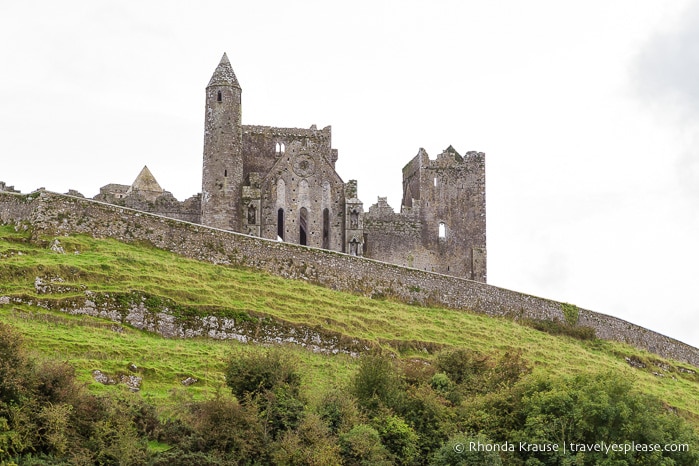
History of the Rock of Cashel
The Rock of Cashel dates back to the 4th century when the Eóghanachta clan claimed it as their base, building a fortress on the hill.
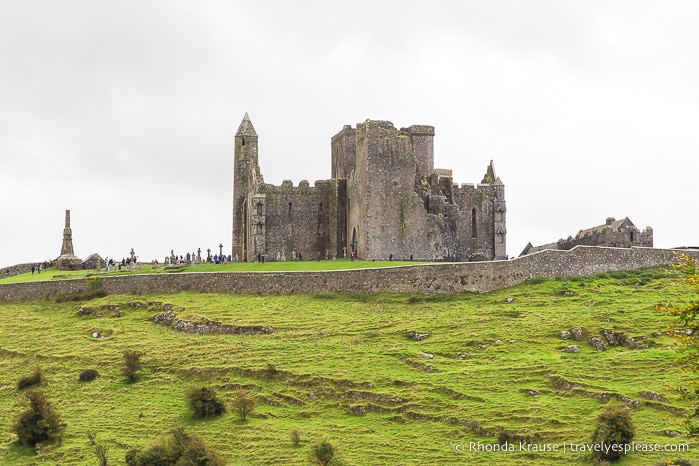
The clan went on to conquer much of the area and become kings of the region, thereby making the Rock of Cashel the seat of the High Kings of Munster (Cashel of the Kings).
For about 400 years, the Rock of Cashel was a centre of power in Ireland, and later, a site of religious significance. It was here that St. Patrick baptized King Aengus, making him Ireland’s first Christian ruler (and giving the Rock the alternative name of St. Patrick’s Rock).
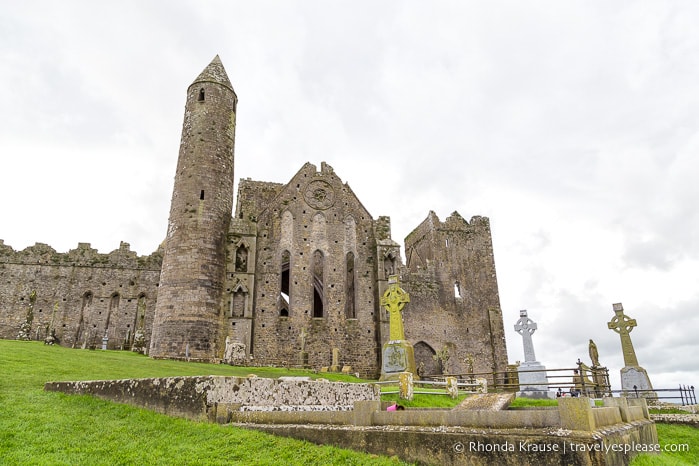
The Eóghanachta clan ruled from the Rock of Cashel until the 10th century, when they lost possession of it to the O’Brien tribe and their leader, Brian Boru.
The O’Briens held the Rock until 1101, when King Muircheartach O’Brien gifted it to the church. During the 12th and 13th centuries, a round tower, Romanesque church, and Gothic cathedral were built at the Rock of Cashel.
Little structural evidence remains from the Rock of Cashel’s days as the seat of the High Kings of Munster, but the church buildings still stand.
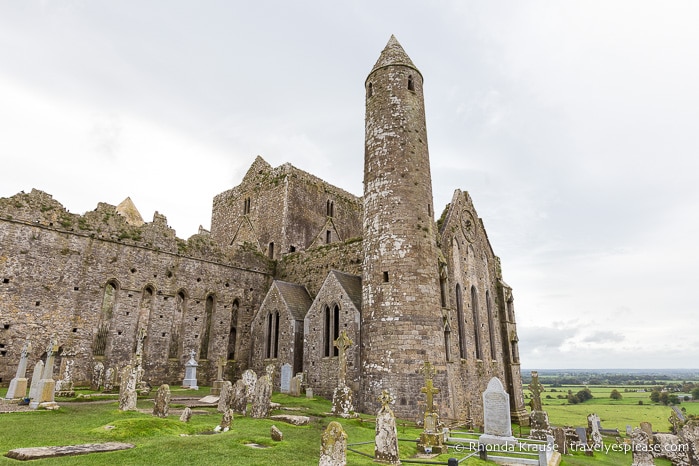
My Visit to the Rock of Cashel- Exploring the Archaeological Remains
The central focus of the Rock of Cashel is the large 13th century cathedral. Used for worship until the mid-1700s, this ruined Gothic cathedral is still a thing of beauty.
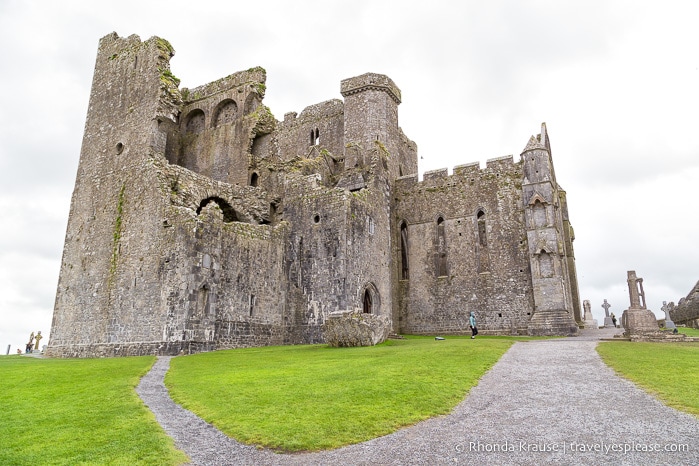
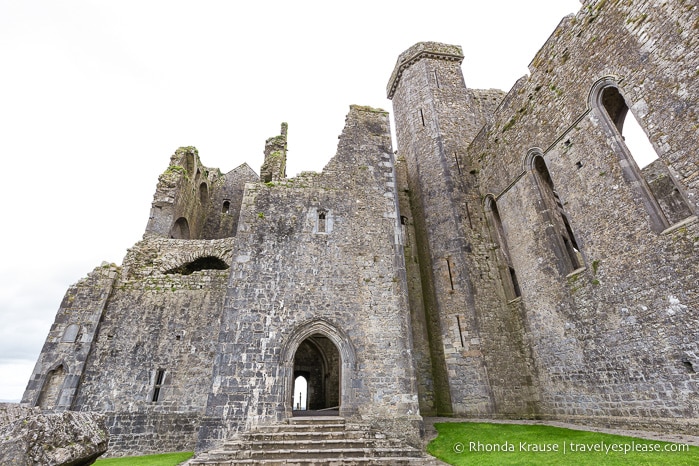
As I walked around inside the cathedral, I imagined the empty window frames filled with stained glass, shining colourful rays of light into the cold, stone interior.
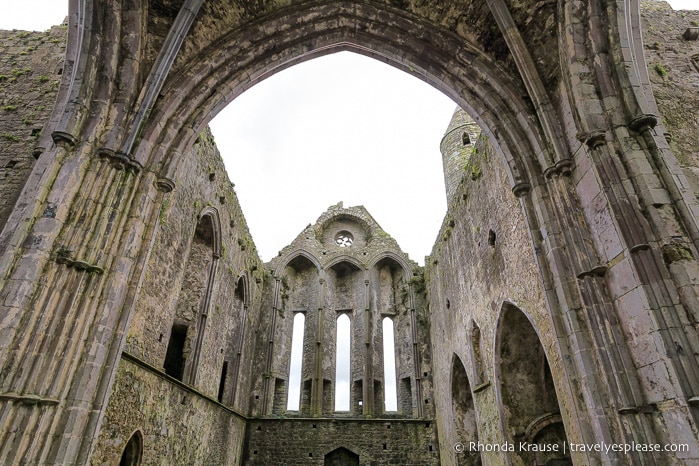
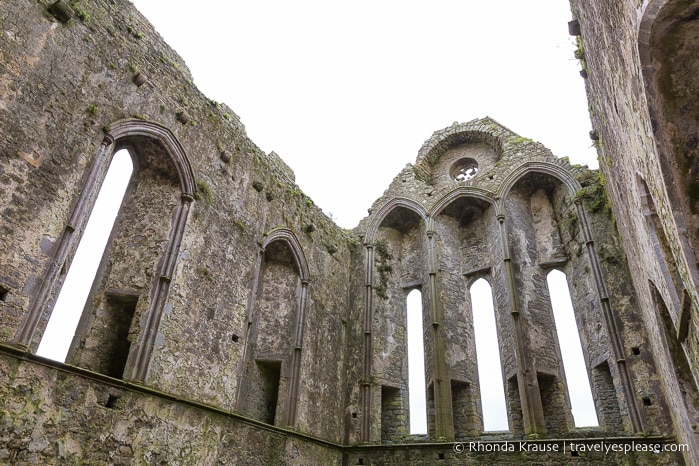
Elegant arches and niches lined the halls, open to the gloomy sky above. I tried not to step on the grave slabs embedded into the floor as I admired the cathedral’s worn decorations.
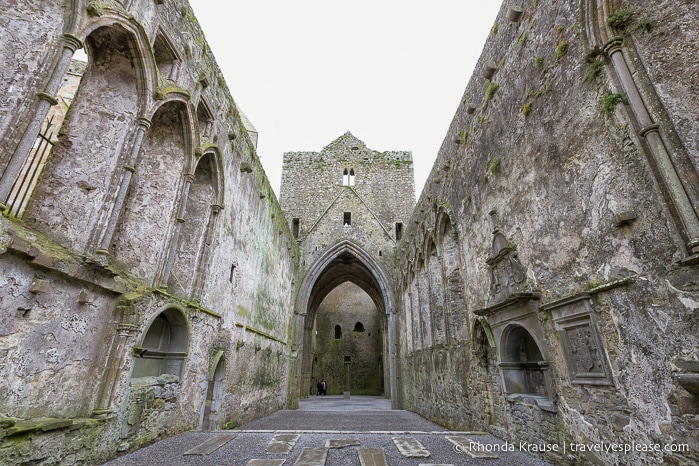
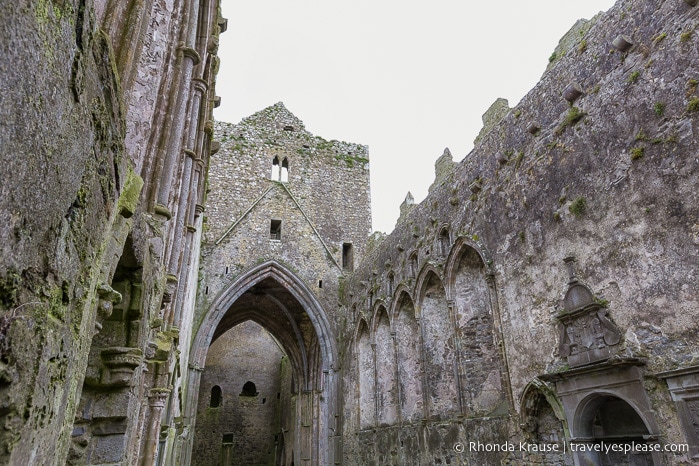
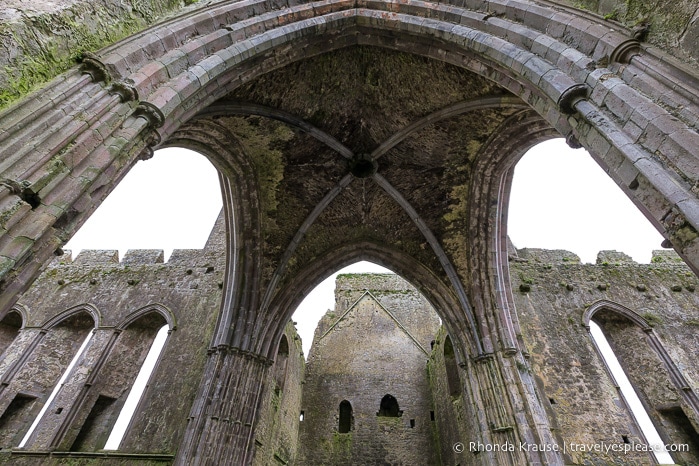
Curious about the grounds, I headed outside to wander around the graveyard. There were several high crosses, intricately sculpted in Early Medieval tradition.
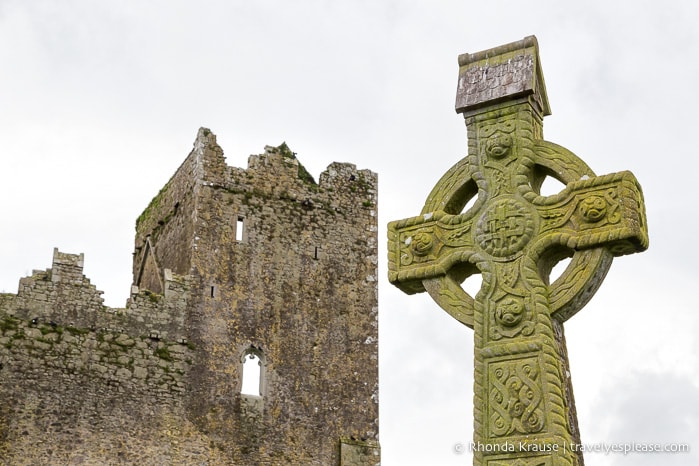
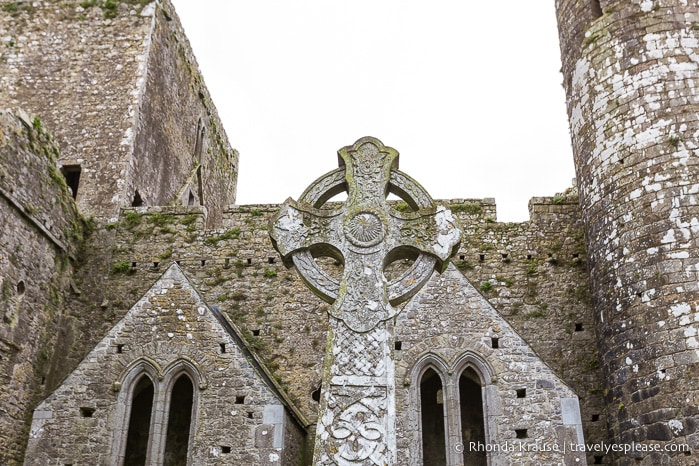
Although time had weathered the grave markers, it added a certain mystique to the site, making it impossible not to wonder about the people laid to rest here so long ago.
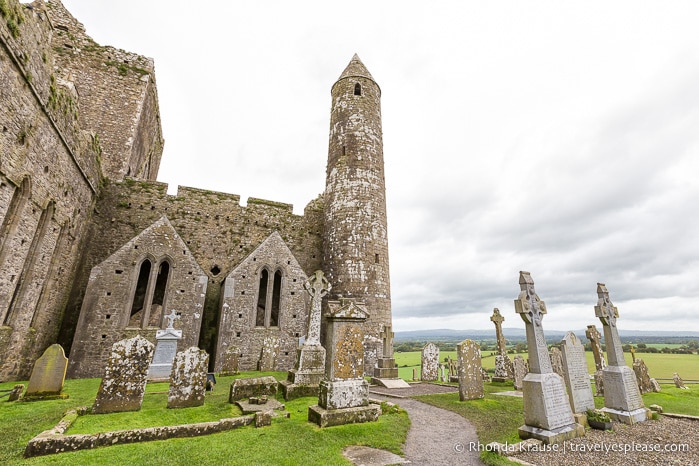
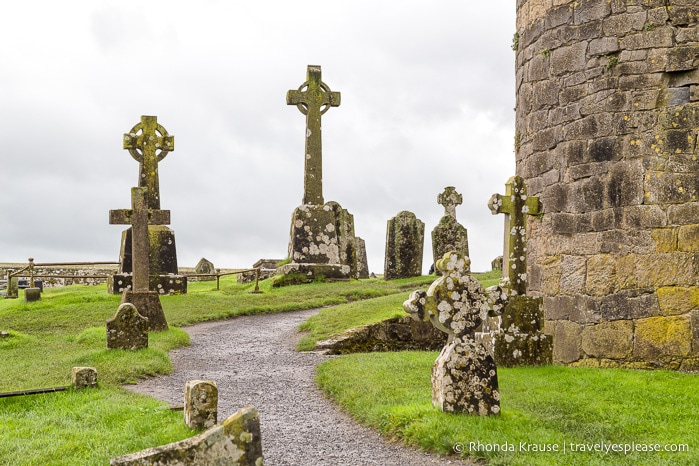
Eventually my attention shifted from the cemetery to the cathedral’s round tower. Built in the 12th century, the 28 metre tall round tower is the oldest surviving building on the Rock of Cashel. It was constructed soon after the church received ownership of the Rock and has stood strong since, with only the roof needing to be rebuilt in the 19th century.
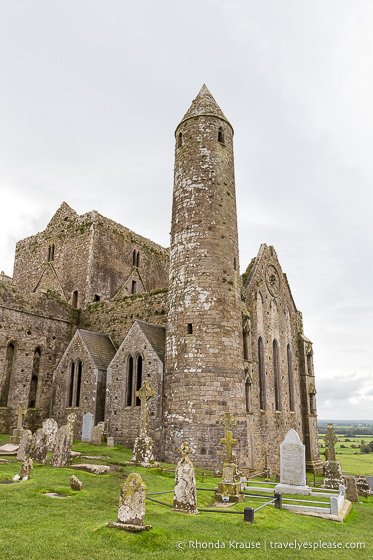
The cathedral on the Rock of Cashel may have captivated me the most, but there’s a smaller chapel that’s of greater importance.
The Chapel of King Cormac (or Cormac’s Chapel) is considered to be one of the finest and most sophisticated Romanesque chapels in Ireland. Built in the 12th century, it contains the oldest Romanesque wall paintings in Ireland and a sarcophagus that may house the corpse of King Cormac’s brother.
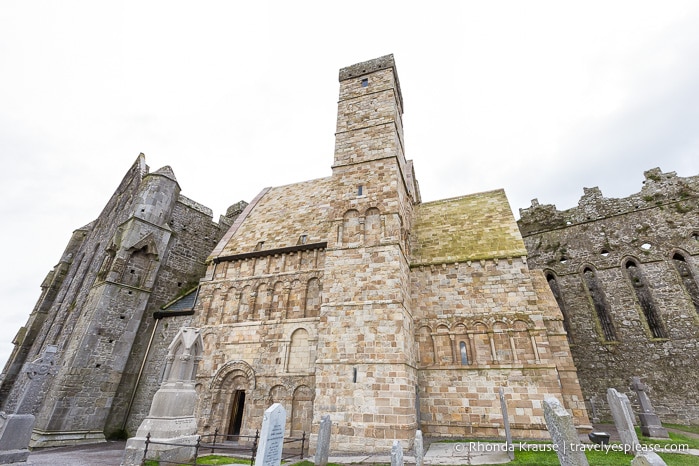
I ended my visit to the Rock of Cashel by breezing through the small museum in the Hall of the Vicars Choral. It has some artifacts that were found on the Rock, but I wanted to spend some time walking around the base of the hill. It was fun to see the Rock of Cashel from different angles!
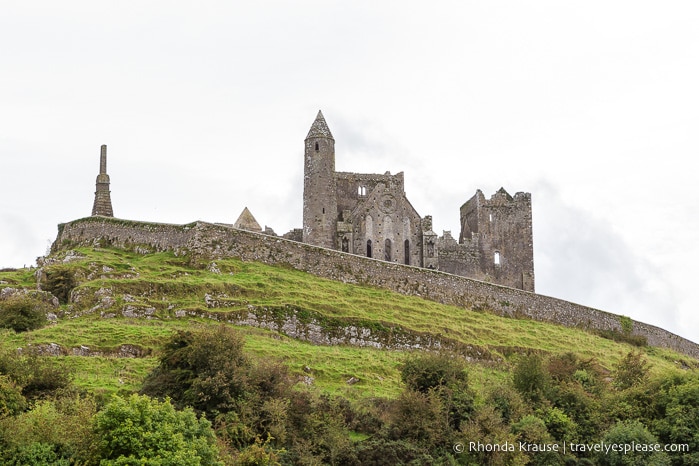
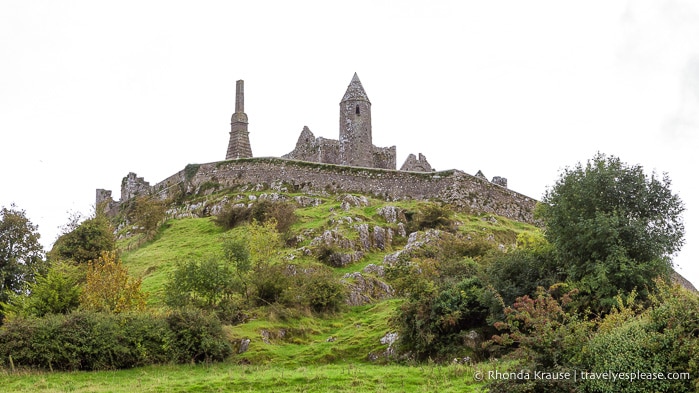
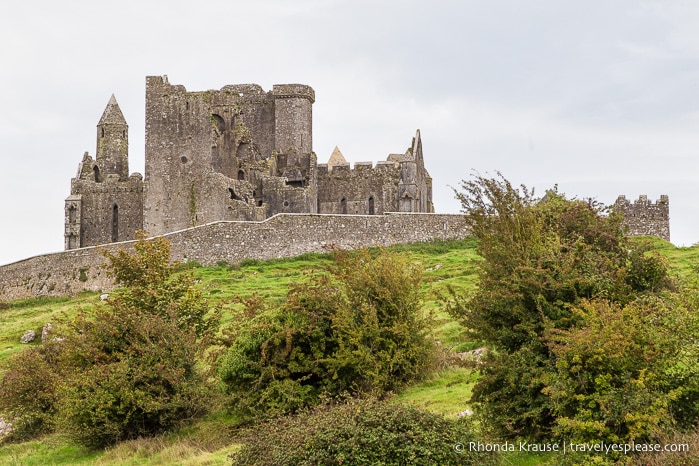
Final Thoughts About My Visit to the Rock of Cashel
I really underestimated how much time I would spend at the Rock of Cashel. It’s a small site, but was so interesting and beautiful, with the perfect combination of Irish history and scenery, that I didn’t want to leave.
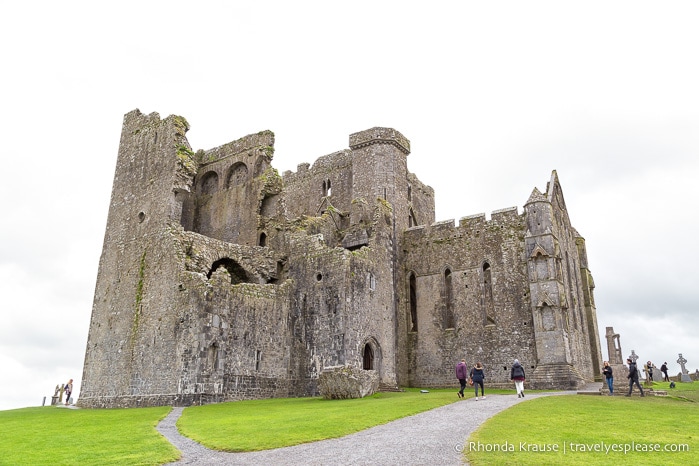
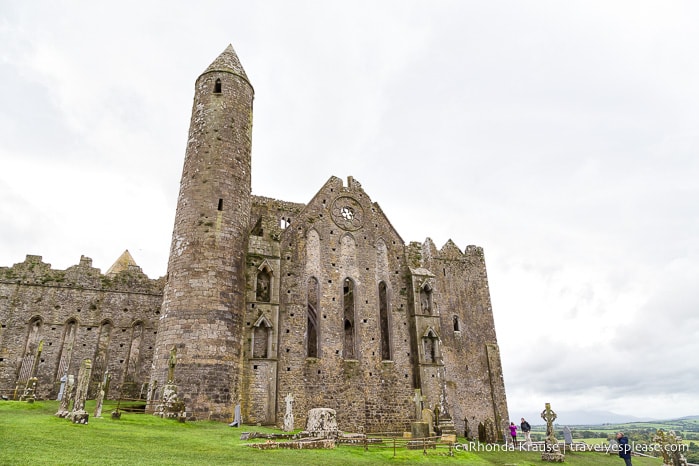
Ruins and ancient sites easily capture my imagination, but the view from the Rock of Cashel was just as gratifying. I loved gazing across the green fields from this mighty location.
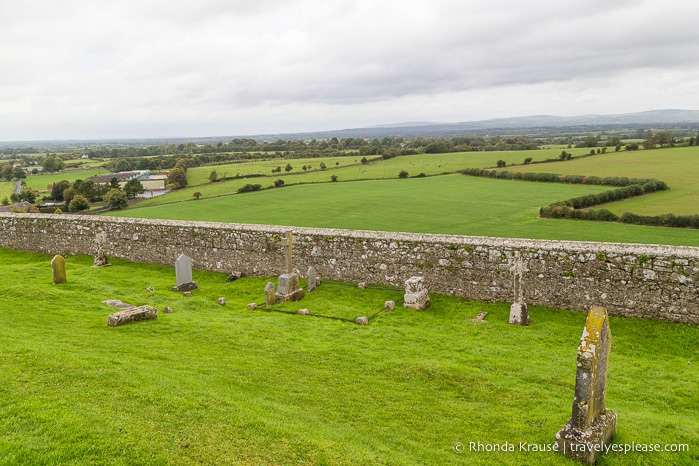
In a country full of historic sites, the Rock of Cashel is one that stood out to become my favourite of all the archaeological sites in Ireland I visited.
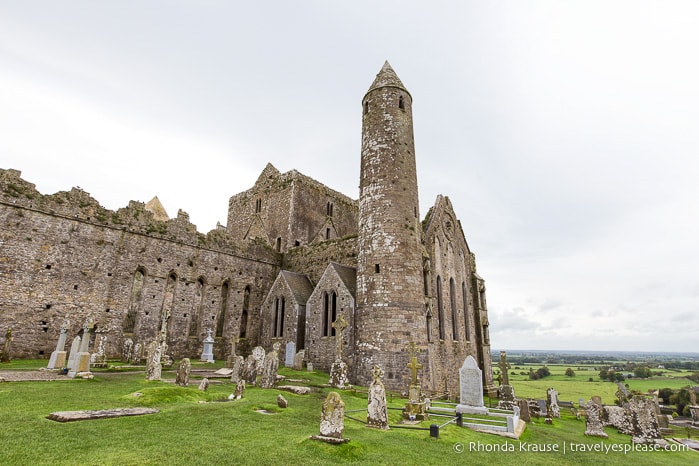
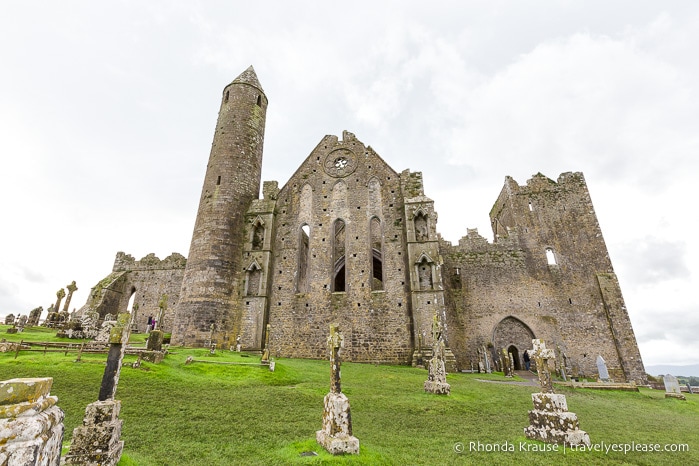
Pictures of the Rock of Cashel
I don’t know what it was about this place, but I felt compelled to take so many photos of the Rock of Cashel. Here are a few more to inspire your own visit!
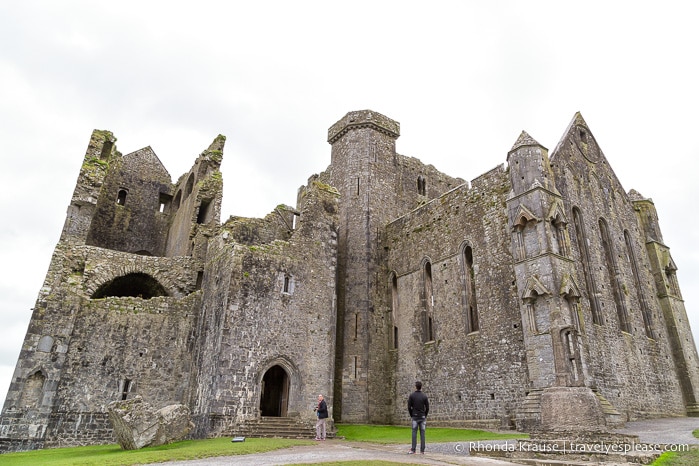
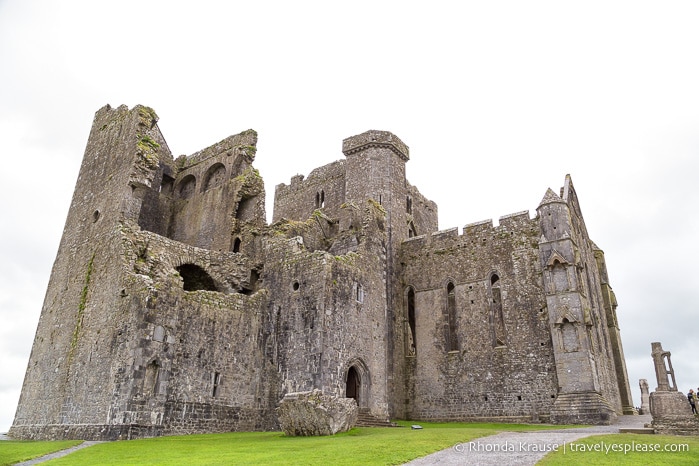
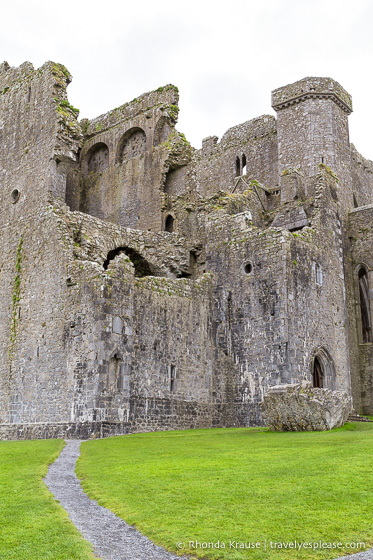
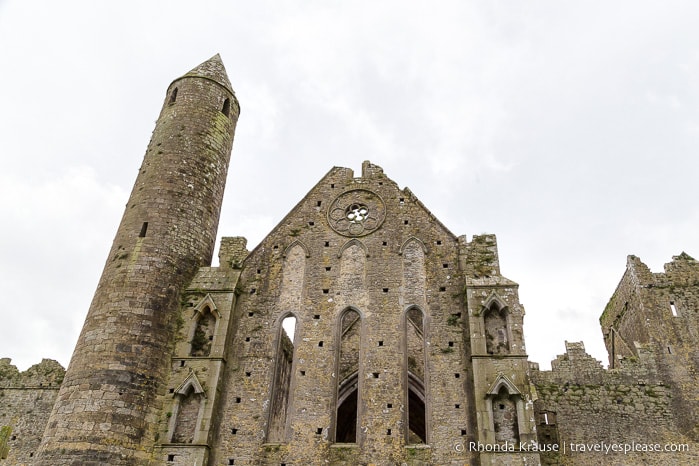
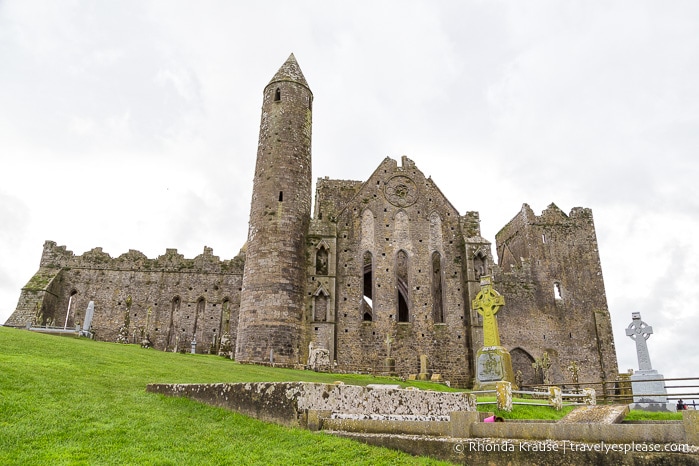
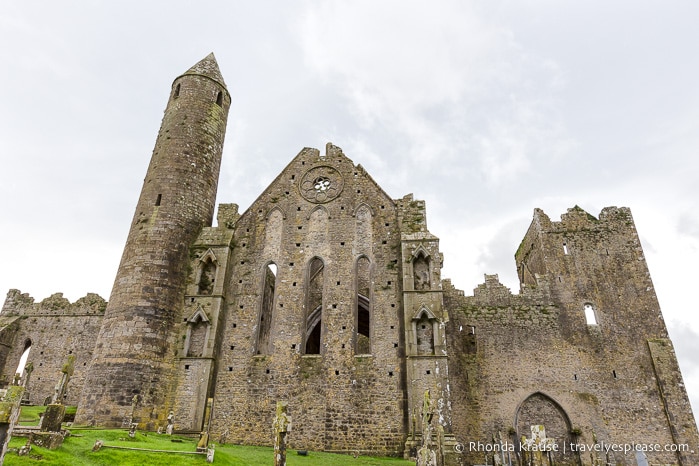
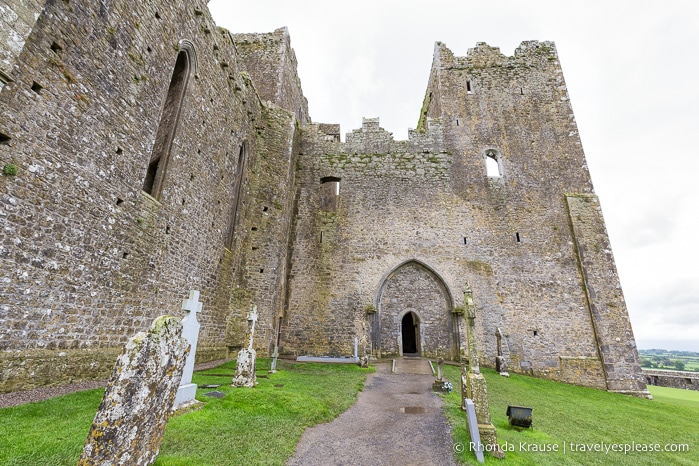
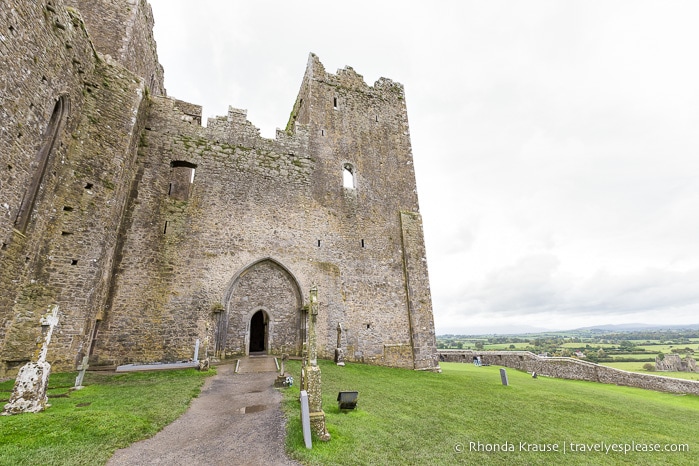
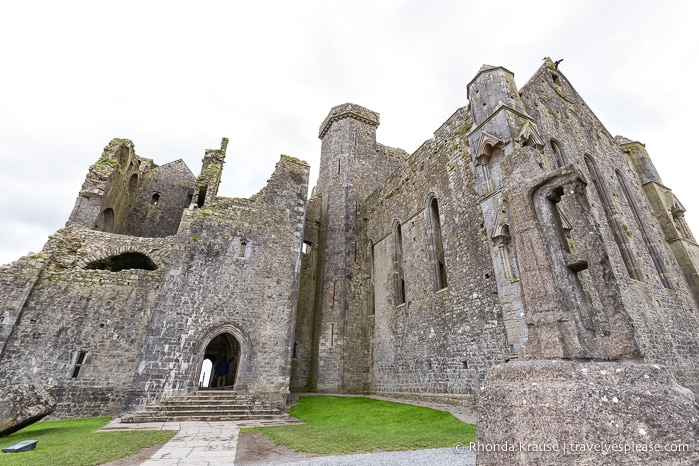
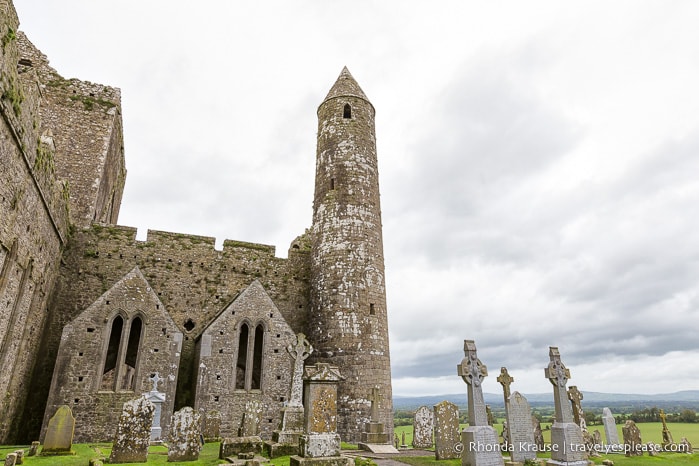
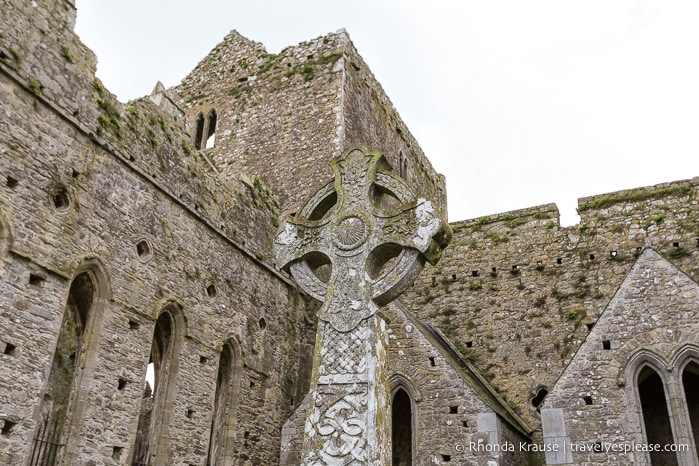
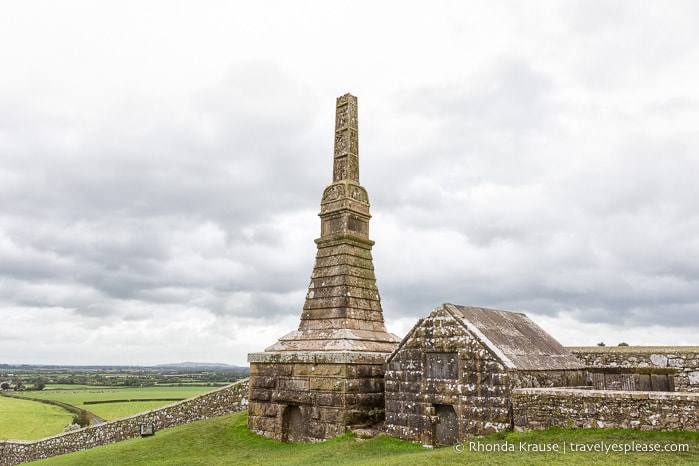
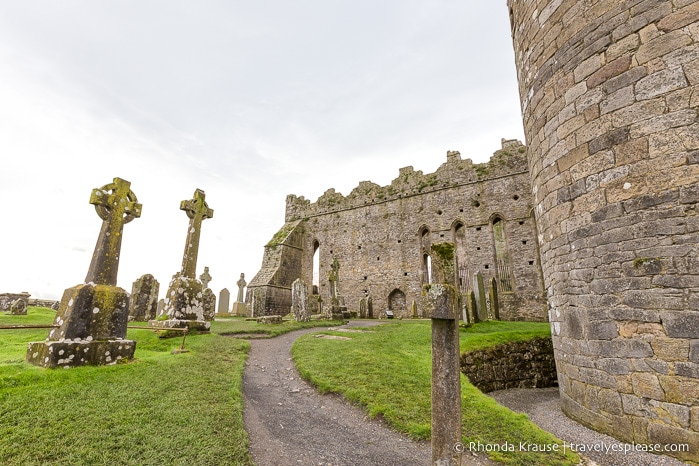
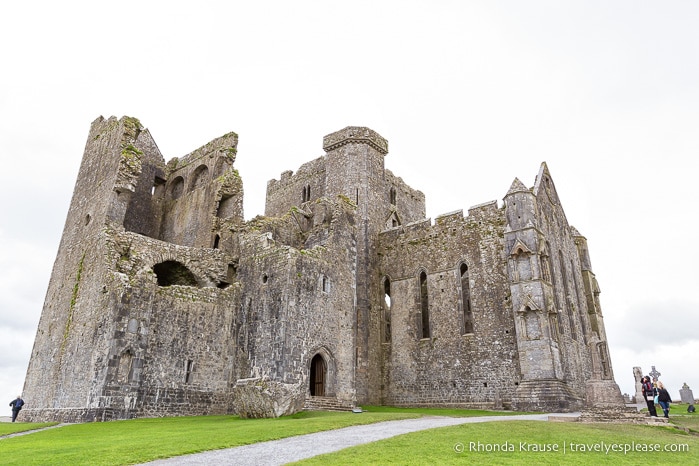
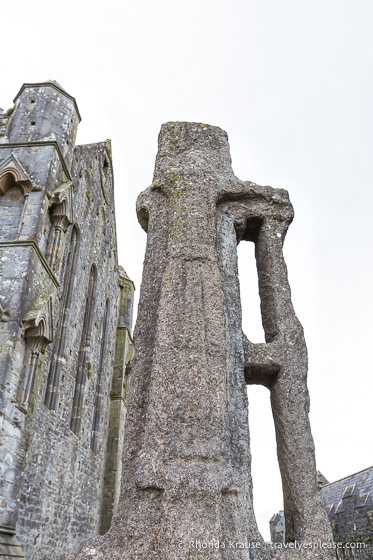
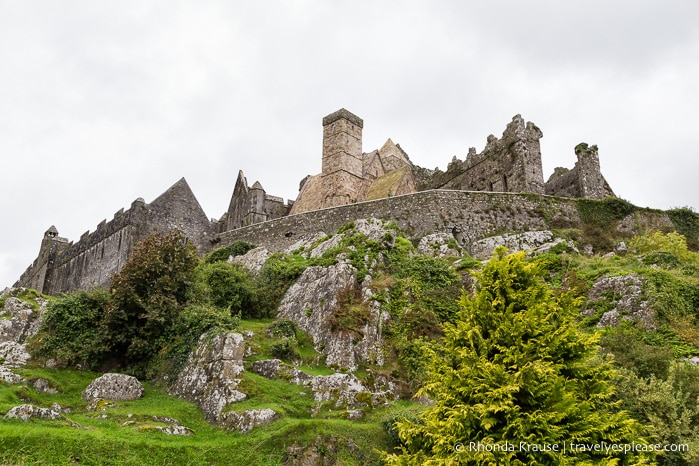
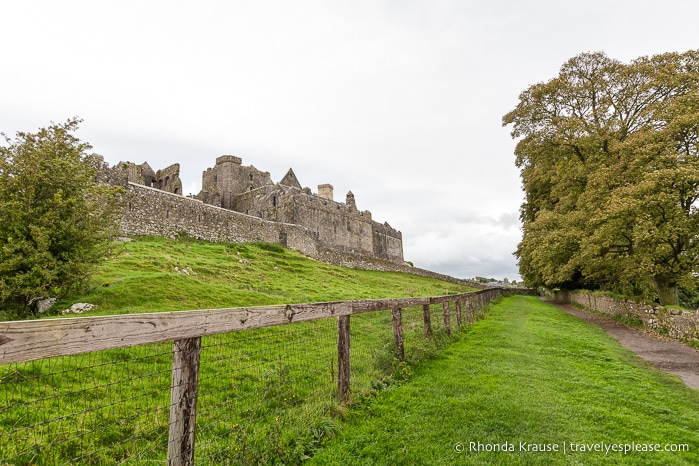
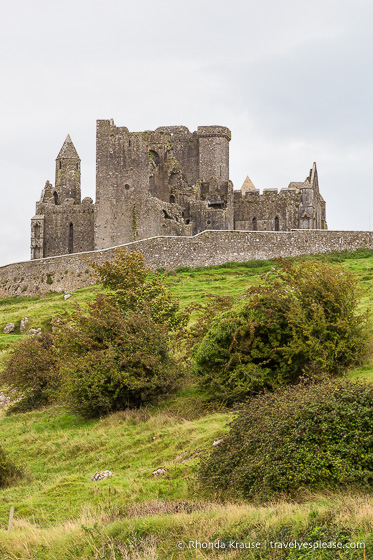
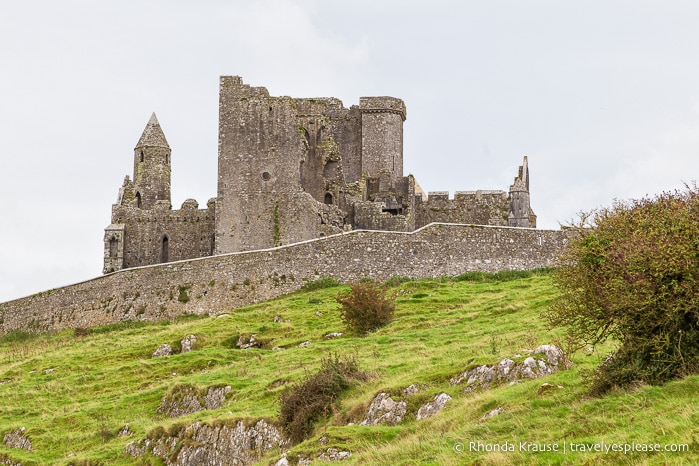
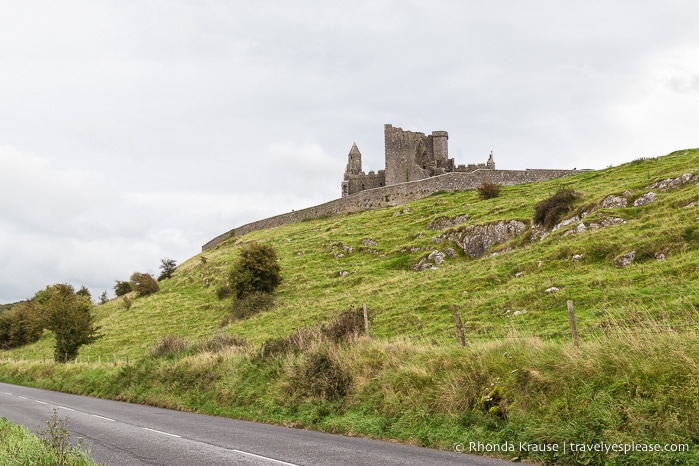
Fun Facts About the Rock of Cashel
Did you know that…
- According to legend, the Rock of Cashel was created when Satan took a bite from Devil’s Bit Mountain, north of Cashel, and spit it out here.
- In 1749, the Archbishop of Cashel, Arthur Price, made the controversial decision to remove the cathedral’s roof.
- The Scully Cross, one of the largest high crosses at the Rock of Cashel, was destroyed by lightning in 1976.
- Queen Elizabeth II visited the Rock of Cashel in 2011.
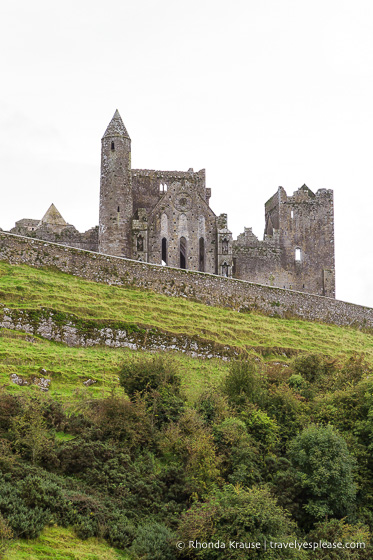
Tips for Visiting the Rock of Cashel
Location: The Rock of Cashel is located in County Tipperary (province of Munster) about 500 metres from the town centre of Cashel. It can be visited as a side trip from Kilkenny, which is about 50 minutes away by car.
Opening Hours and Admission: The Rock of Cashel is open year round except December 24- 26th. The site opens at 9:00 am and last admission is at 4:45 pm (3:45 pm mid-October to mid-March). Confirm current opening hours here.
- There is an admission fee to visit the Rock of Cashel. Tickets can be booked online here or bought on-site.
Rock of Cashel Tour: When you enter the Rock of Cashel you may be able to join a guided tour (if there’s one scheduled to start soon) or do a self-guided visit of the site. These guided tours last about 45 minutes but don’t include a visit to Cormac’s Chapel. If you want see the interior of Cormac’s Chapel, you will need to buy the ticket that includes a tour of the chapel (it can only be visited with a guide).
Parking: The Rock of Cashel parking lot is nearby on Rock Lane. A fee is charged.
Time to Visit: The average amount of time to visit Rock of Cashel is 1- 1.5 hours.
Other Places to Visit in Cashel: If you love ruins, I recommend visiting Hore Abbey. You can see it from the Rock of Cashel standing alone in a field. It’s a 10 minute downhill walk or very short drive to get there.
Information was updated January 2025, but can change without notice. Please confirm directly with the venue.
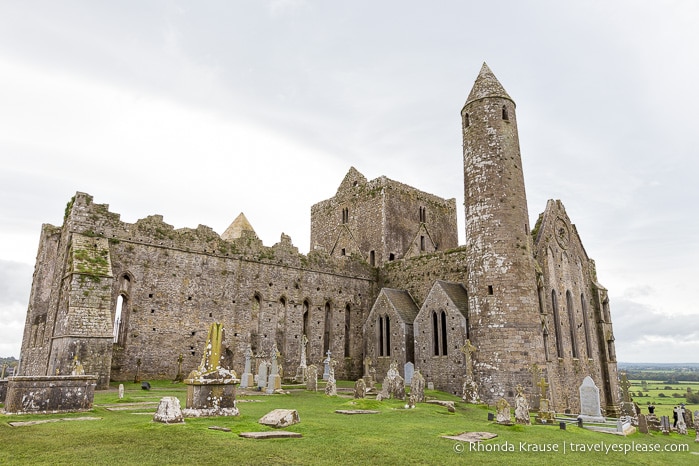
Tours of the Rock of Cashel
Here is a trusted site where you can book tours to the Rock of Cashel and surrounding attractions.
Accommodations Near the Rock of Cashel
For your convenience, here is a list of hotels in Cashel and Kilkenny (a larger town less than an hour away). Please consider booking your accommodations through the included link. It costs nothing extra and helps support this website. Thank you!
